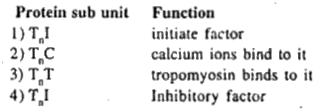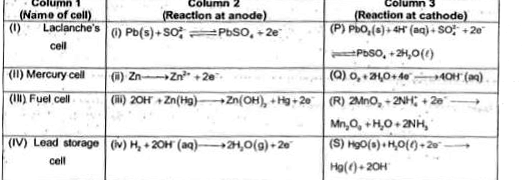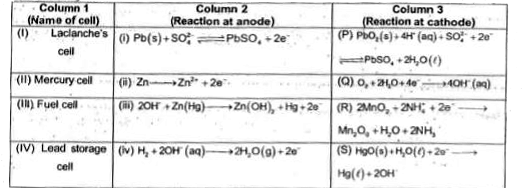Identify the correct combination from the following
Amoeboid movement - streaming of protoplasm - Euglena
Flagellar movement - undulations - Spermatozoa
Ciliary movement - Metachronous rhythmAcineta
Muscular movement - Catraction of myonemes - perinteis
The correct Answer is:B
To solve the question, we need to analyze the movements mentioned and identify the correct combinations associated with them. Here's a step-by-step breakdown:
Step 1: Identify the Movements
1. Amiboid Movement: This movement is characterized by the formation of pseudopodia and is primarily seen in amoeba.
2. Flagellar Movement: This movement is facilitated by flagella and is typical in organisms like spermatozoa.
3. Ciliary Movement: This movement is performed using cilia and is common in certain protozoa and some bacteria.
4. Muscular Movement: This involves the contraction of muscles and is seen in animals.
Step 2: Analyze Each Option
1. First Option: Amiboid movement is associated with amoeba, not euglena. Therefore, this option is incorrect.
2. Second Option: Flagellar movement is indeed shown by spermatozoa, making this option correct.
3. Third Option: Ciliary movement is not applicable to plants; it is usually seen in protozoa or certain bacteria. Thus, this option is incorrect.
4. Fourth Option: Muscular movement relates to muscle contraction, but the term "pherintase" does not relate to muscle contraction. Hence, this option is also incorrect.
Step 3: Conclusion
Based on the analysis, the only correct option is the second one, which relates to flagellar movement shown by spermatozoa.
Final Answer
The correct combination is Option B (Flagellar movement shown by spermatozoa).
---
1. Amiboid Movement: This movement is characterized by the formation of pseudopodia and is primarily seen in amoeba.
2. Flagellar Movement: This movement is facilitated by flagella and is typical in organisms like spermatozoa.
3. Ciliary Movement: This movement is performed using cilia and is common in certain protozoa and some bacteria.
4. Muscular Movement: This involves the contraction of muscles and is seen in animals.
1. First Option: Amiboid movement is associated with amoeba, not euglena. Therefore, this option is incorrect.
2. Second Option: Flagellar movement is indeed shown by spermatozoa, making this option correct.
3. Third Option: Ciliary movement is not applicable to plants; it is usually seen in protozoa or certain bacteria. Thus, this option is incorrect.
4. Fourth Option: Muscular movement relates to muscle contraction, but the term "pherintase" does not relate to muscle contraction. Hence, this option is also incorrect.
Based on the analysis, the only correct option is the second one, which relates to flagellar movement shown by spermatozoa.
The correct combination is Option B (Flagellar movement shown by spermatozoa).
Topper's Solved these Questions
- LOCOMOTION AND MOVEMENTBook:AAKASH SERIESChapter:LOCOMOTION AND MOVEMENTExercise:EXERCISE -I(SKELETAL SYSTEM)
Explore 41 Videos
- LOCOMOTION AND MOVEMENTBook:AAKASH SERIESChapter:LOCOMOTION AND MOVEMENTExercise:EXERCISE -I(JOINTS)
Explore 10 Videos
- LOCOMOTION AND MOVEMENTBook:AAKASH SERIESChapter:LOCOMOTION AND MOVEMENTExercise:EXERCISE -III(PREVIOUS AIPMT/NEET QUESTIONS)
Explore 26 Videos
- HUMAN REPRODUCTIONBook:AAKASH SERIESChapter:HUMAN REPRODUCTIONExercise:EXERCISE-III
Explore 55 Videos
- MINERAL NUTRITIONBook:AAKASH SERIESChapter:MINERAL NUTRITIONExercise:Exercise - III
Explore 52 Videos
Similar Questions
Identify the correct combinations

View SolutionIdentify the incorrect combination from the following
View SolutionIdentify the incorrect combination
View SolutionSelect the correct combination from the following .
View SolutionIdentify the incorrect combination.

View Solution
The correct combination is
View Solution
The correct combination is
View SolutionIdentify the mismatched combination from the follwing
View SolutionIdentify the correct statement from the following
View SolutionIdentify the correct statement from the following:
View Solution
